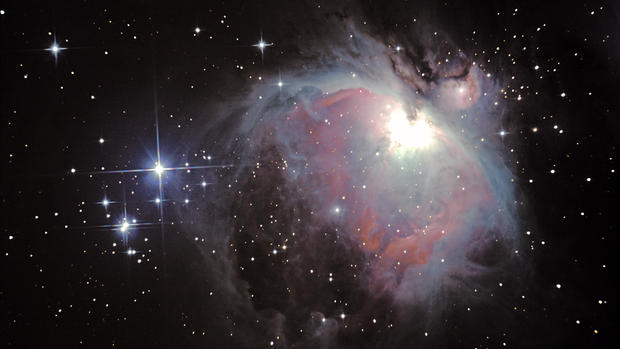This giant planet might be heading into a slow death spiral
There may be a previously undiscovered planet out there that's getting a serious sunburn. Astronomers on the hunt for the galaxy's youngest planets might have found a newly formed so-called "hot Jupiter," whose outer layers are bring relentlessly ripped off by its nearby star. More damage is done with each orbit, which take just 11 hours apiece.
The research comes out of Rice University and will be published in The Astrophysical Journal. It was made available online this week.
"A handful of known planets are in similarly small orbits, but because this star is only 2 million years old this is one of the most extreme examples," Rice University astronomer and study co-lead author Christopher Johns-Krull said in a press release.
The study makes the case for the gas giant, orbiting star PTFO8-8695, to be designated a new exoplanet. The star is found in the Orion constellation.
The planet candidate -- dubbed with the catchy name "PTFO8-8695 b" -- orbits a star about 1,100 light years from Earth and is at most twice the mass of Jupiter.
"We don't yet have absolute proof this is a planet because we don't yet have a firm measure of the planet's mass, but our observations go a long way toward verifying this really is a planet," Johns-Krull added. "We compared our evidence against every other scenario we could imagine, and the weight of the evidence suggests this is one of the youngest planets yet observed."
In addition to Johns-Krull and Lowell Observatory astronomer Lisa Prato, who led the study, the research team included 10 co-authors from a wide range of institutions, including the University of Texas at Austin, NASA, Cal Tech, and the National Institute of Aerospace in Spain.
"We don't know the ultimate fate of this planet," Johns-Krull explained. "It likely formed farther away from the star and has migrated in to a point where it's being destroyed. We know there are close-orbiting planets around middle-aged stars that are presumably in stable orbits. What we don't know is how quickly this young planet is going to lose its mass and whether it will lose too much to survive."
It is difficult to pinpoint a young planet. Back in May, Johns-Krull and the same research team announced the discovery of "CI Tau b," which is the first exoplanet to be found to orbit a star that is so young that it is only still a gaseous disc.
Finding these planets is hard in that very few of their stars are bright enough to be viewed with current telescopes.
This one was first designated as a planetary candidate by the Palomar Transit Factory's Orion survey in 2012.
"In 2012, there was no solid evidence for planets around 2-million-year-old stars," Prato added. "Light curves and variations of this star presented an intriguing technique to confirm or refute such a planet. The other thing that was very intriguing about it was that the orbital period was only 11 hours. That meant we wouldn't have to come back night after night after night, year after year after year. We could potentially see something happen in one night. So that's what we did. We just sat on the star for a whole night."
The team used a spectroscopic analysis of the star's light the ultimately pinpointed a kind of light that is emitted from highly energized hydrogen atoms.
The researchers examined the star dozens of times and conducted this work out of the University of Texas at Austin's McDonald Observatory as well as the Kitt Peak National Observatory's telescope in southern Arizona.

